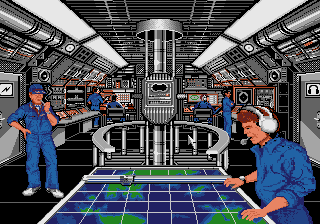Oh God, I think I’m going to crash the Internet with all these links. Â And that’s just from searching for “Ebert” in my Google Reader. Â You should probably read this one too. Â All of those are worth clicking on and reading. Â The comments also. Â I think I even made a comment or two in there somewhere. Â On the subject at hand, I’m not certain I’m decided. Â Though if pressed, I might have to say that games are not art, or at the very least that the majority of games are not art.
One of the nice things about most forms of traditional art is that they don’t change. Â The Mona Lisa is The Mona Lisa still. Â Casablanca is Casablanca. Â The text of Hamlet remains. Â That last example begins to get to my line of thinking. Â No one would argue that Hamlet is a work of literary art, but individual productions of Hamlet will be heavily debated. Â In fact, in the artistic world, a production of Hamlet would be considered performance art, not simply art.
When you go to a museum and look at a painting on the wall, that painting will be exactly the same every time you go to see it. Â What changes from viewing to viewing is YOU. Â The same can be said for books and films and most of the traditional art forms. Â If I were to load up World of Warcraft or Crysis or even a game like Flower (which many people consider to be art) and just watch it, it might be art but it wouldn’t be a game. Â If I go to YouTube and watch videos of people playing games, it might be art, the video, and it might be a game for the person who made it, but for me it wouldn’t be a game.
A game is like Schrödinger’s cat, it is a collection of potentials that are, in actual terms, useless until we open the box and see if the cat is alive or dead.  A game isn’t a game until we play it.  To me, it seems that video games are more like sports than they are like paintings or books or movies.  A baseball player might have a beautiful swing, and there may be many artful things in a game of baseball, but I don’t believe that anyone would call a baseball game “art”.  Unlike most art, not only do you change between visits to a game, but the game changes too.  Sure, some games are so simple that they don’t change much at all, but those aren’t usually the games people claim are art.  Saying a video game is a single piece of art is like saying that all the productions of Hamlet are a single piece of art.  A game is ephemeral.  Unless someone video tapes it, you can’t return to the game exactly as it was before, and if you do it through video the subsequent times you return they are movies, which might be art but aren’t games.
As I said, a game isn’t a game until we play it, so the gamer is part of the game since we can’t have one without the other. Â Many people bristle at the idea of video games being a sport. Â Face it, many people who play video games do so to get away from sports. Â (I kid, I kid!) (Not really.) Â So perhaps we should stray back towards plays. Â From the audience, a play is performance art, a performance of art. Â But what is a play for the performers? Â Is the act of acting “art” from the perspective of the actor? Â Or is the performer the artist? A painting, completed, is art, but is the act of creating the painting art? Â I don’t believe it is. Â From that view, game developers aren’t creating art, they are creating paints and brushes and easels, production notes and outlines, tools from which art can be created by the gamer. Â A game, completed, might be art, but again if you are experiencing a completed game you are probably watching a movie, not playing a game.
All of this talking around in circles leads me to believe that since I find it so hard to define a game as being art there are only two options. Â Either the words and terms and methods to define a game as art don’t yet exist or at least are not known to me, or that games are not art but might just be a medium through which art can be created. Â In the end, I’m liking that second option better because if games are art that make me an art consumer (or connoisseur if I’m fluffing my ego), but if games are a medium then I am an artist.


